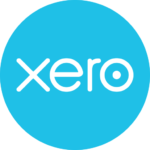The cloud has become the most cost-effective and useful technology alternative on the market for accountants
Everyone talks about the famous cloud, but do you know what it is?
The cloud, according to Microsoft Azure, “is a term used to describe a global network of servers, each with a unique function. It’s not a physical entity, but a huge network of remote servers around the world that are connected to function as a single ecosystem.”
In other words, cloud storage is not having dedicated storage hardware or server connected to the network in the office; we talk about cloud computing, when we access data or programs over the Internet.
Relationship between the cloud and the counter
And what good could the cloud do you as an accountant?
This technology is becoming increasingly accessible to companies of all sectors and sizes, but for the accounting area, it has meant a major transformation that is helping to simplify processes and have the information always available and secure.
Online accounting is taking over the world of business globally:
- Safety and Mobility
With cloud services, the company achieves more than just storage. Cloud solutions not only ensure data backups, but also leverage the security investment of the cloud computing service provider.
- Connect processes and data
Cloud accounting software benefits from continuous data synchronization, allowing you to work together and in real time on the same files without losing information.
- Business visibility
Integrating accounting data into software with cloud access will help you get real-time reports and visualizations of the financial status of the customers’ companies for which the accountant provides its services.
Accessing reliable information will improve the ability to make strategic decisions for the company and reduce risks.
- Simplify technology management
Migrating to the cloud provides the ability to free up hard disk space and eliminate monitoring and maintenance of computers and tools. This means fewer IT expenses, less administrative control, and more room to grow.
 If something can be done by accounting software in the cloud, it is to fully customize the operations, making changes of periods, accounts or groups and preview, in a matter of seconds, the result on the screen, without having to resort to complex operations. Xero accounting software allows you to collaborate in the cloud and keep real time information about your financial data and invoices. You can check out benefits of Xero here.
If something can be done by accounting software in the cloud, it is to fully customize the operations, making changes of periods, accounts or groups and preview, in a matter of seconds, the result on the screen, without having to resort to complex operations. Xero accounting software allows you to collaborate in the cloud and keep real time information about your financial data and invoices. You can check out benefits of Xero here.
- Accounting software with cloud access
Accounting software reduce the typing time, automate financial processes, attract more customers through accuracy and transforms accounting into more than management; it makes it an experience, providing multiple benefits ranging from the operational, to the immediacy of response that is given to customers.
Features of cloud software that gives value to the accounting area
- Easy to use
- Flexible
- Portability
- Adaptability
Check out the benefits of Xero here:
- Mobile access: Xero accounting software allows the user to take actions via mobile device. All you need is web connection in your gadget to access financial data.
- Reconcile from Anywhere: The bank statements are robotically sent to Xero software through secure connection. The user can easily take action if something is wrong.
- Easy Recording: This accounting software has simple layout that demands few clicks to record deposits and expenses. You can click here for Xero PSG and enjoy financial benefits.
